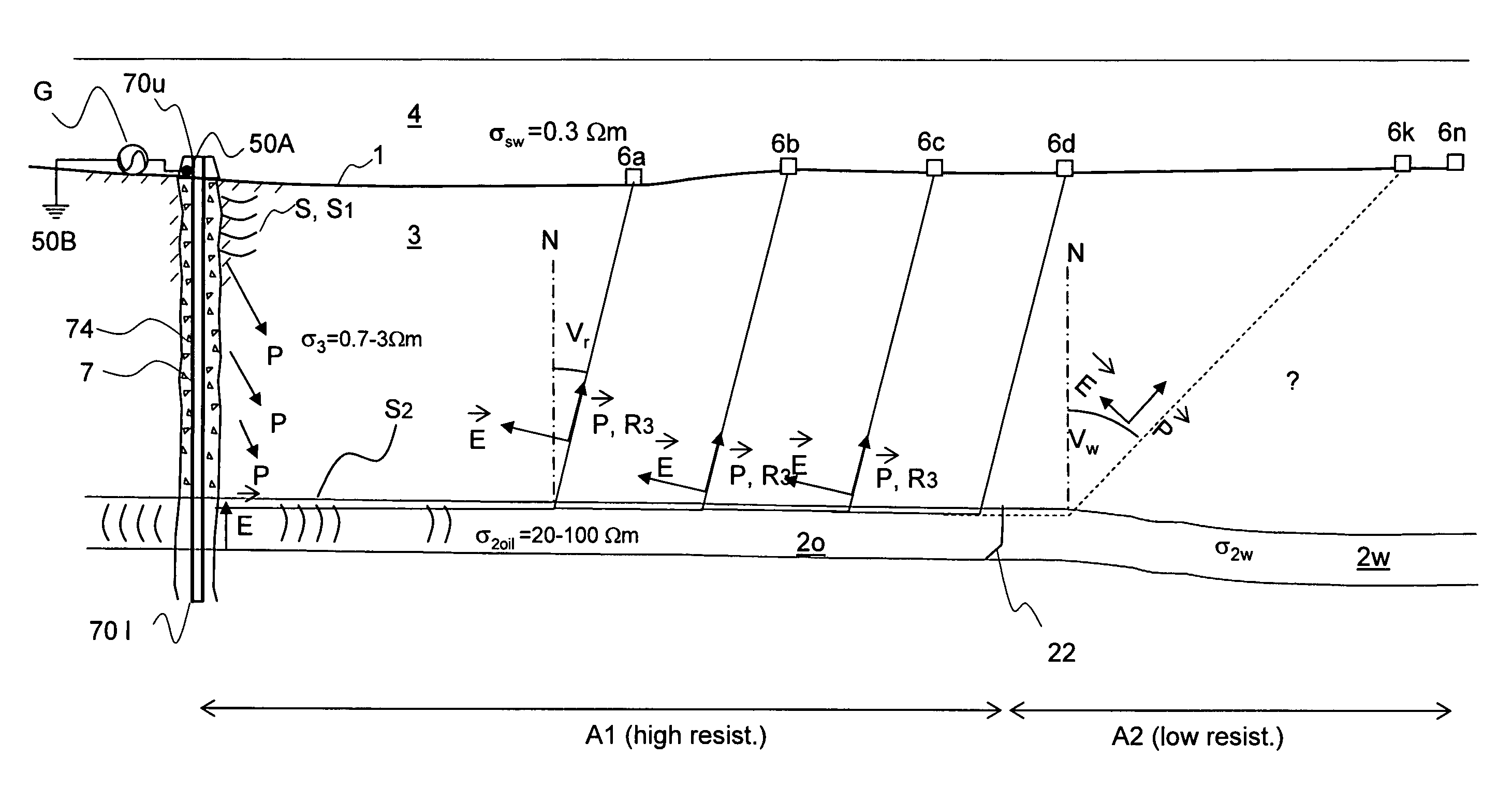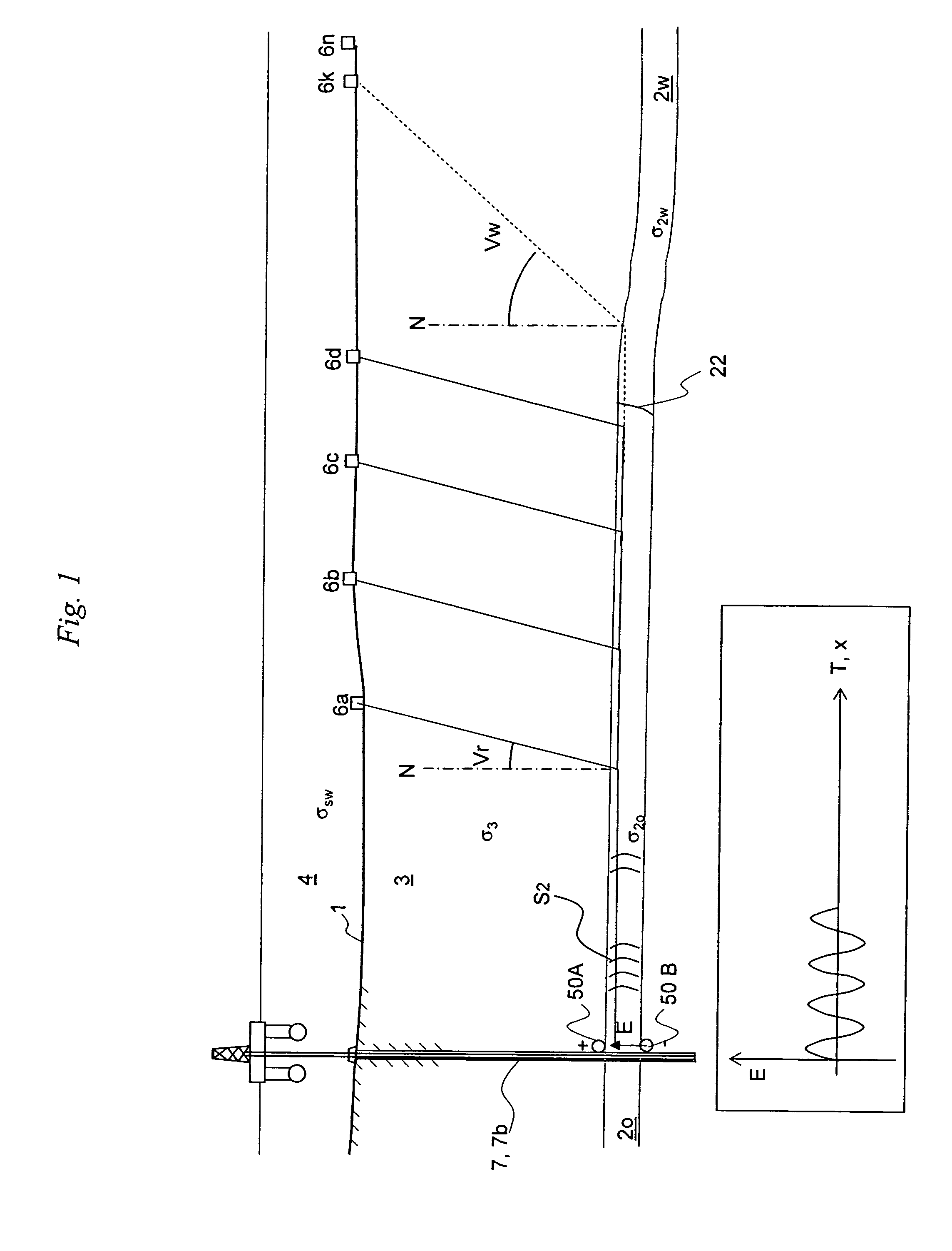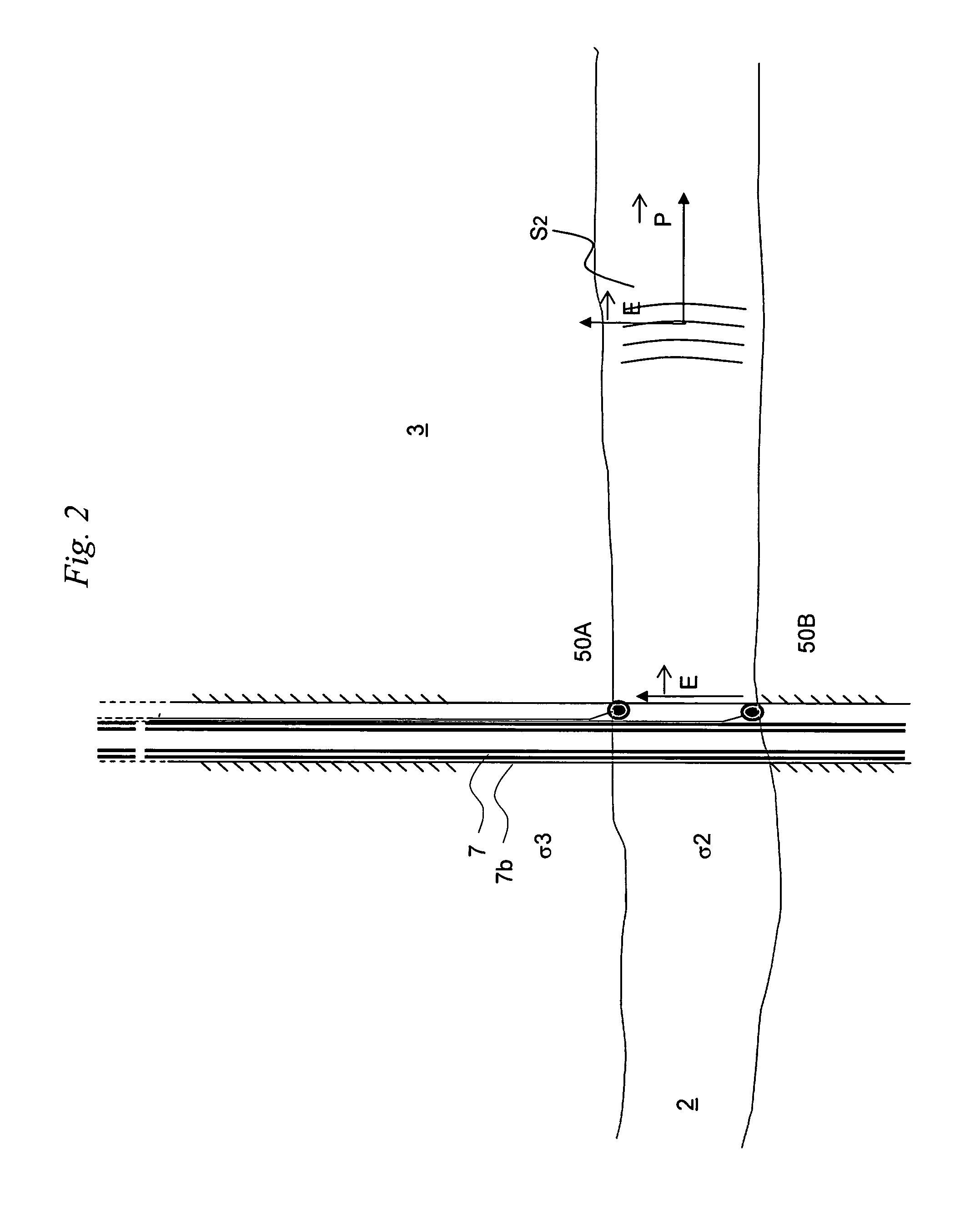Method for monitoring low-resistivity formation using polarized waves
a technology of resistivity and low-resistance formation, which is applied in the direction of acoustic wave reradiation, measurement devices, electric/magnetic detection for well-logging, etc., can solve the problems of difficult supply of electrical energy for such a downhole transmitter antenna arranged near the actual production zone, production must be shut down, and the operation of the antenna to the required depth in the well is relatively complicated. , to achieve the effect of efficient transmission
- Summary
- Abstract
- Description
- Claims
- Application Information
AI Technical Summary
Benefits of technology
Problems solved by technology
Method used
Image
Examples
Embodiment Construction
[0045]FIG. 1 illustrates a situation in which an antenna 50 of an electromagnetic transmitter 5 is arranged in a borehole 7b through low-resistivity formations 3, and in which the borehole 7b also penetrates a high-resistivity petroleum fluid bearing formation 2. The antenna 50 is arranged at the outside of a conductive casing 7 for transmitting an electromagnetic signal S into the high-resistivity formation 2. As the electromagnetic waves propagate through the formations, eventually refracted electromagnetic waves are received on the surface 1 of the overburden geological formations 3. The surface 1 may be a seafloor or a land surface. The surface may, in the method of this method, not be the sea surface except for rather shallow applications, due to severe seawater attenuation of EM signals. A separation line 22 in the fluid bearing formation 2 indicates a transition from an oil-filled portion 20 of the high-resistivity formation 2 and a water-filled lower-resistivity portion of t...
PUM
 Login to View More
Login to View More Abstract
Description
Claims
Application Information
 Login to View More
Login to View More - R&D
- Intellectual Property
- Life Sciences
- Materials
- Tech Scout
- Unparalleled Data Quality
- Higher Quality Content
- 60% Fewer Hallucinations
Browse by: Latest US Patents, China's latest patents, Technical Efficacy Thesaurus, Application Domain, Technology Topic, Popular Technical Reports.
© 2025 PatSnap. All rights reserved.Legal|Privacy policy|Modern Slavery Act Transparency Statement|Sitemap|About US| Contact US: help@patsnap.com



